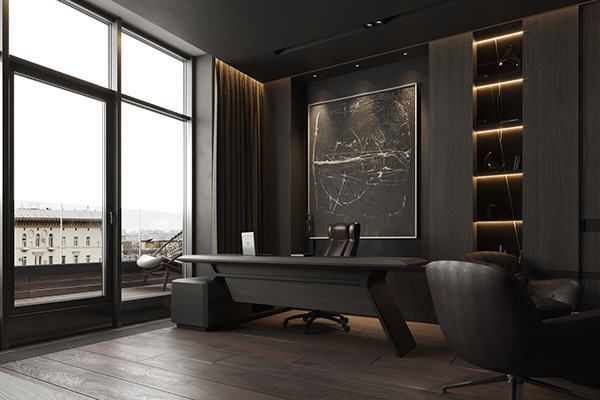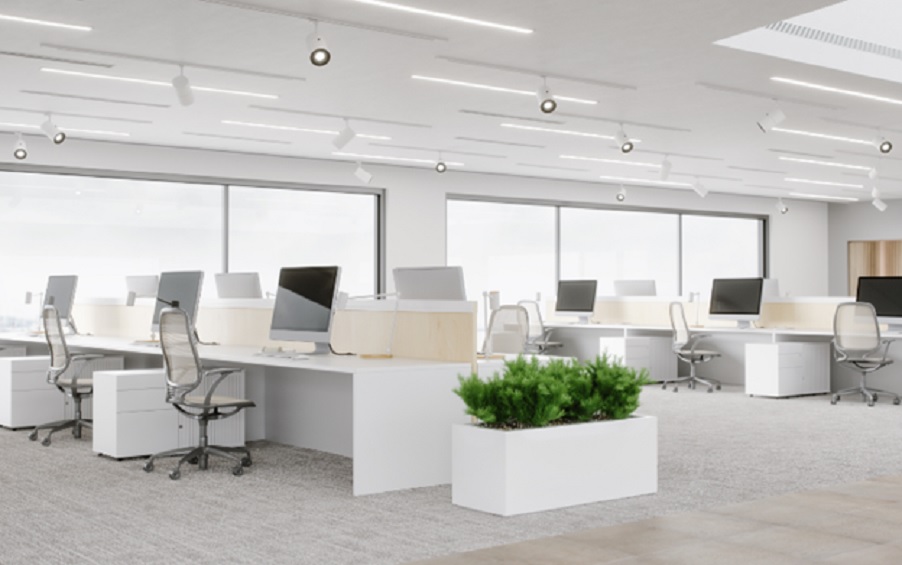A well-designed office is crucial for small businesses in today’s competitive business world. Not only does it create a positive work environment, but it also leaves a lasting impression on clients and employees alike. Here are some innovative office interior design ideas to help small businesses make the most of their space while enhancing productivity and comfort.
1. Multi-functional Workspaces
Small businesses often need more space. One effective way to tackle this is by creating multi-functional workspaces. A single area can serve several purposes: a meeting room that doubles as a break area or a workspace that can transform into a collaborative zone with just a few adjustments. The key is to use modular furniture that can be rearranged quickly to meet changing needs. Investing in foldable tables, stackable chairs, and movable partitions ensures the office remains flexible, adapting to various daily tasks. Focusing on functionality, the office interior design becomes dynamic and versatile, using every square metre best.
2. Maximise Natural Light
Lighting is an essential aspect of office interior design, and maximising natural light can dramatically change the atmosphere of a small office. Natural light creates a more welcoming environment and reduces the need for artificial lighting, lowering energy costs. Position workstations near windows and choose glass partitions over opaque ones to allow light to flow through the space. Doing so creates an open and airy feel, making even the smallest offices appear larger. In addition, natural light has been proven to boost employee morale and productivity, making it a win-win solution for small businesses looking to enhance their workspace.
3. Incorporate Vertical Storage Solutions
With limited square footage, small businesses need to think vertically regarding storage. Wall-mounted shelves, hanging organisers, and tall cabinets are excellent options for keeping the office tidy without wasting valuable floor space. Businesses can declutter desks and workstations using vertical storage, promoting an organised and efficient work environment. Consider open shelving to store supplies or display decorative items, which can add character to the office without sacrificing functionality. Proper office interior design ensures that storage solutions blend seamlessly with the overall aesthetic, contributing to a clean, clutter-free workspace.
4. Use Colour Strategically
Colour is significant in office interior design, particularly in small spaces. The right choice of colours can influence the mood and energy of the office. Neutral tones like white, beige, and light grey can make the office feel more spacious, while pops of brighter colours like blue or green can boost creativity and focus. Accent walls, colourful furniture, or art pieces can bring life to an otherwise minimalist office design. It’s essential to maintain a balance between functionality and aesthetics; too much colour can be overwhelming, while a lack of colour can make the space feel dull. The strategic use of colour in the office interior design enhances the overall ambience, making the space inviting and productive.
5. Bring Nature Indoors
Adding greenery is one of the most effective ways to improve an office’s aesthetics. Plants purify the air and create a calming environment, which benefits employee well-being. Small businesses with limited space can opt for low-maintenance plants like succulents or hanging planters to save on-floor space. Vertical gardens or wall-mounted plant displays can also add a modern and innovative touch to the office. Incorporating natural elements into the office interior design promotes a sense of tranquillity and relaxation, making the workspace more pleasant for everyone.

6. Embrace Open-plan Layouts
Small businesses can benefit significantly from an open-plan office layout. Removing unnecessary walls and partitions makes the office more spacious and encourages better communication and collaboration among team members. An open-plan design also allows for more flexibility in terms of furniture arrangement and workstations. While privacy may be a concern, businesses can use strategically placed dividers, screens, or acoustic panels to reduce noise and provide areas for focused work. An open-plan layout contributes to a more cohesive and transparent work environment, ideal for small businesses looking to foster teamwork and creativity.
7. Invest in Ergonomic Furniture
Comfort is critical when designing an office for a small business. Ergonomic furniture, such as adjustable chairs, sit-stand desks, and supportive keyboards, can significantly enhance employee well-being and productivity. Employees are more likely to stay focused and motivated throughout the day when they are comfortable. Ergonomics should be a priority in any office interior design, as it helps to prevent workplace injuries and promotes a healthier work environment. For small businesses, investing in high-quality, ergonomic furniture is an investment in their team’s long-term success and overall job satisfaction.
8. Create Dedicated Breakout Spaces
In a small office, focusing solely on workstations and overlooking the importance of relaxation areas is easy. However, providing a dedicated breakout space is essential for employee well-being. A comfortable lounge area with soft seating, coffee tables, and relaxing décor can serve as a retreat for employees to take a break and recharge. These spaces also encourage informal meetings and brainstorming sessions, fostering creativity and collaboration. Thoughtful office interior design includes work areas and spaces for employees to unwind, contributing to a more balanced and productive workday.
For more information, contact Ampersand Associates today.




